
My brother’s house in Lee, New Hampshire, was built in the early 1980s as a low-energy home. The house has double-stud walls. His photovoltaic array was added to the short south-facing roof pitch in January 2016.
Photo: Israel YostImage #2: Closeup of PV panels
This is a closeup of my brother’s PV panels after 3 or 4 days of no rain in June, near the height of the pollen production season for his area. A web site called Weather Underground provides pollen assessment by type — tree, grass, or weed — and even species.
Photo: Israel YostImage #3: Types of dust
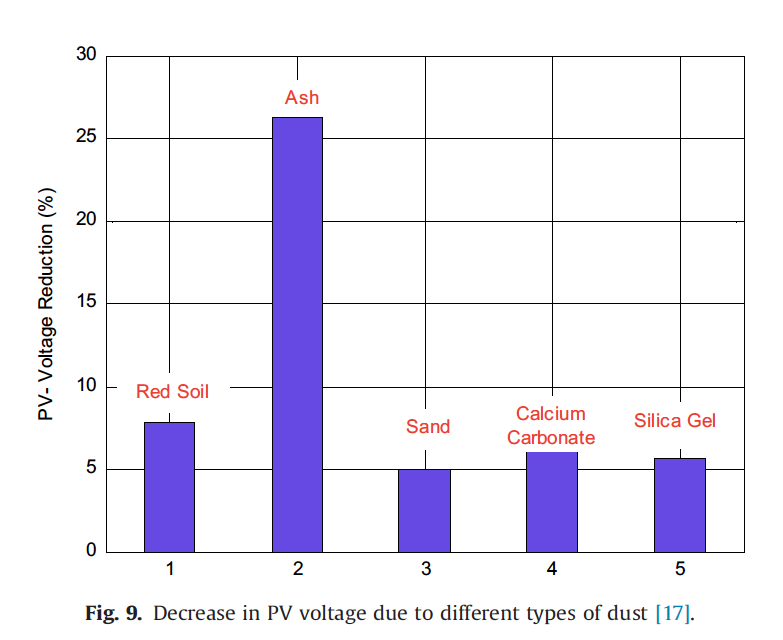
This graph is from “Effect of dust pollutant type on photovoltaic performance,” published in Renewable and Sustainable Energy Reviews, volume 41, 2015.
Image: Renewable and Sustainable Energy ReviewsImage #4: Bird droppings
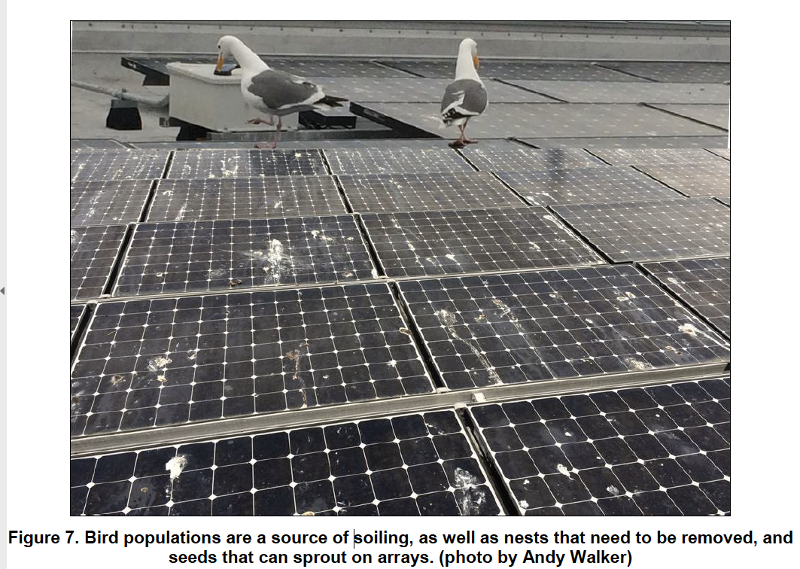
This photo was published in an NREL report, “Best Practices in Photovoltaic Systems Operation and Maintenance,” 2nd edition.
NRELImage #5: Optimizing cleaning schedules
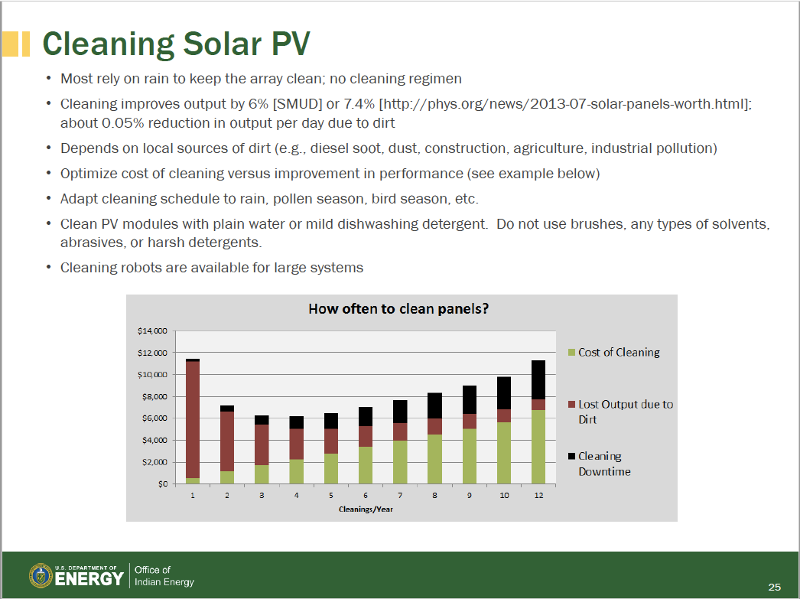
This is a reproduction of an image from page 25 of a DOE Office of Indian Energy report, “The 5-Step Development Process; Step 5: Project Operations and Maintenance.”
Image: U.S. Department of EnergyImage #6: Tractor-mounted cleaning arms
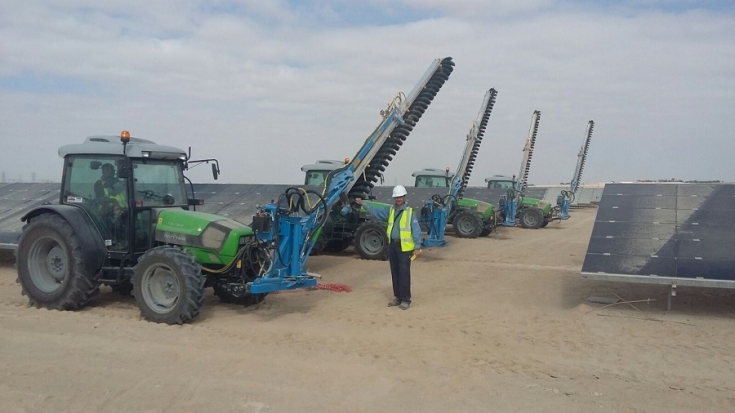
These Sunbrush brand tractor-mounted brushes are used to clean the solar panels of a 200 MW solar installation in Seih Al-Dahal, Dubai.
Photo: Sunbrush Mobil GmbHImage #7: Cleaning robots
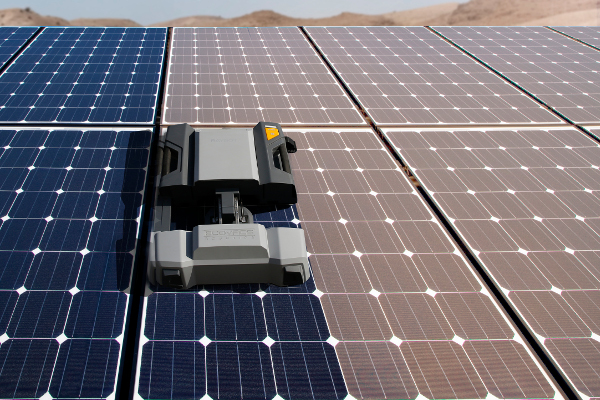
Ecovacs Robotics recently introduced the Raybot, a waterless solar panel cleaning robot.
Photo: Ecovacs RoboticsImage #8: Rack-mounted cleaning system
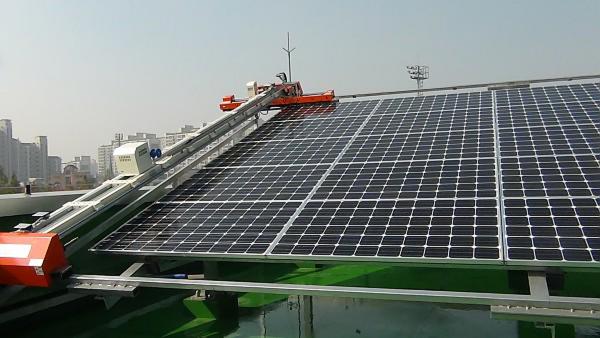
Under the Solmaks brand, a company called Integra Global makes a range of panel-cleaning systems, including this rack-mounted device.
Photo: Integra GlobalImage #9: Elbow grease
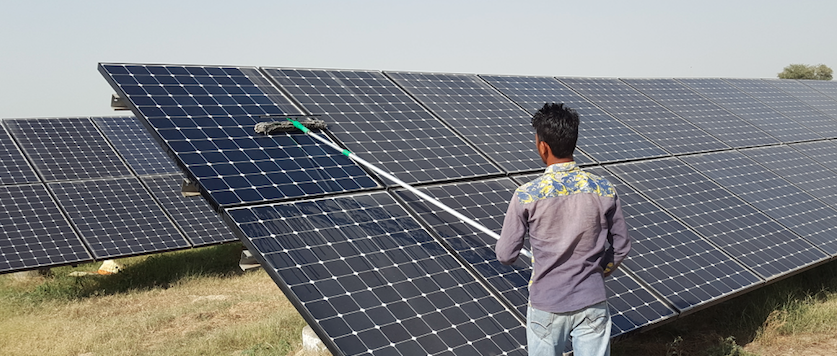
This worker in India is using the “elbow-grease” panel cleaning system.
Global Sustainable Energy Systems, India